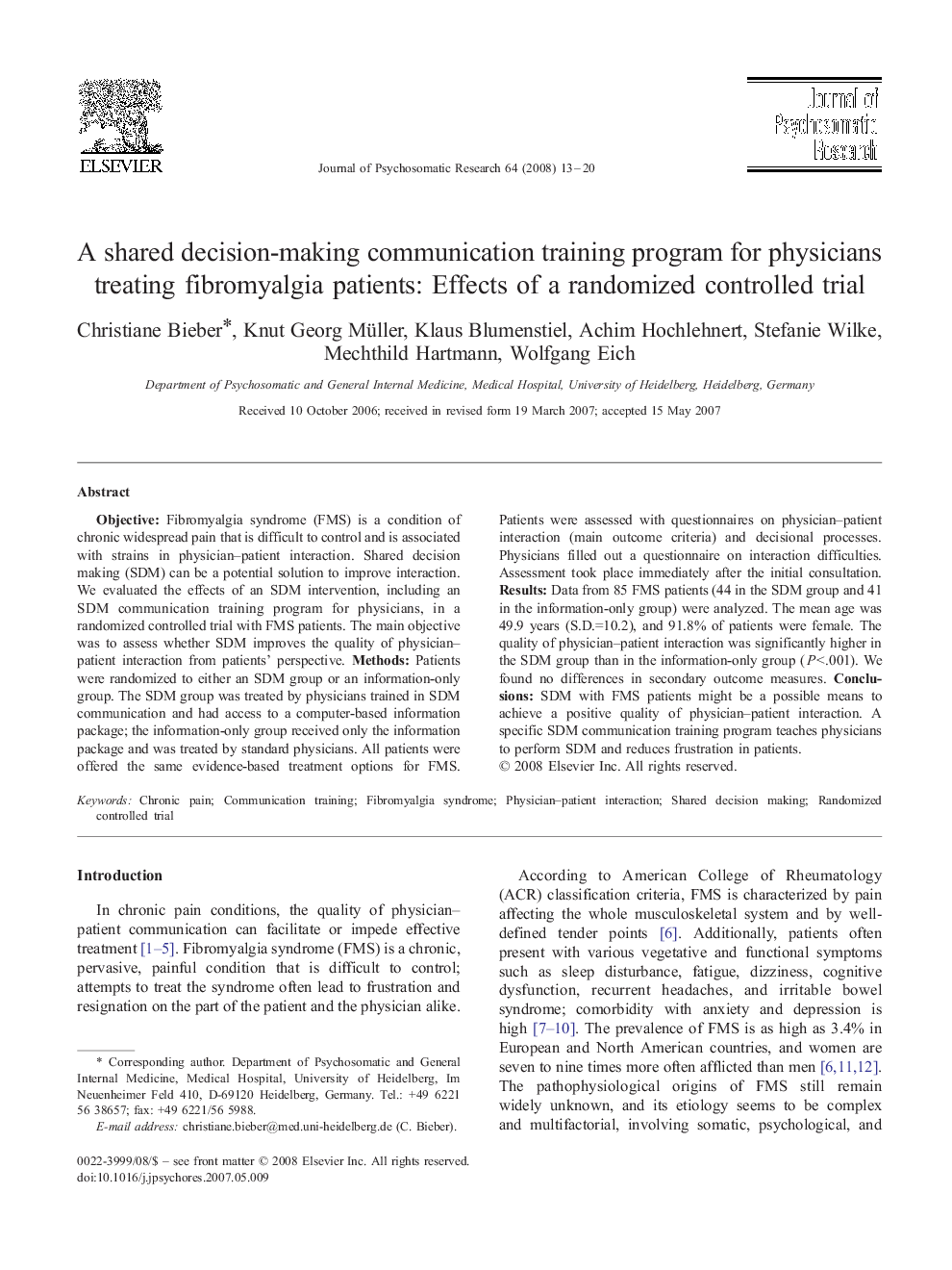| کد مقاله | کد نشریه | سال انتشار | مقاله انگلیسی | نسخه تمام متن |
|---|---|---|---|---|
| 951116 | 926861 | 2008 | 8 صفحه PDF | دانلود رایگان |

ObjectiveFibromyalgia syndrome (FMS) is a condition of chronic widespread pain that is difficult to control and is associated with strains in physician–patient interaction. Shared decision making (SDM) can be a potential solution to improve interaction. We evaluated the effects of an SDM intervention, including an SDM communication training program for physicians, in a randomized controlled trial with FMS patients. The main objective was to assess whether SDM improves the quality of physician–patient interaction from patients' perspective.MethodsPatients were randomized to either an SDM group or an information-only group. The SDM group was treated by physicians trained in SDM communication and had access to a computer-based information package; the information-only group received only the information package and was treated by standard physicians. All patients were offered the same evidence-based treatment options for FMS. Patients were assessed with questionnaires on physician–patient interaction (main outcome criteria) and decisional processes. Physicians filled out a questionnaire on interaction difficulties. Assessment took place immediately after the initial consultation.ResultsData from 85 FMS patients (44 in the SDM group and 41 in the information-only group) were analyzed. The mean age was 49.9 years (S.D.=10.2), and 91.8% of patients were female. The quality of physician–patient interaction was significantly higher in the SDM group than in the information-only group (P<.001). We found no differences in secondary outcome measures.ConclusionsSDM with FMS patients might be a possible means to achieve a positive quality of physician–patient interaction. A specific SDM communication training program teaches physicians to perform SDM and reduces frustration in patients.
Journal: Journal of Psychosomatic Research - Volume 64, Issue 1, January 2008, Pages 13–20